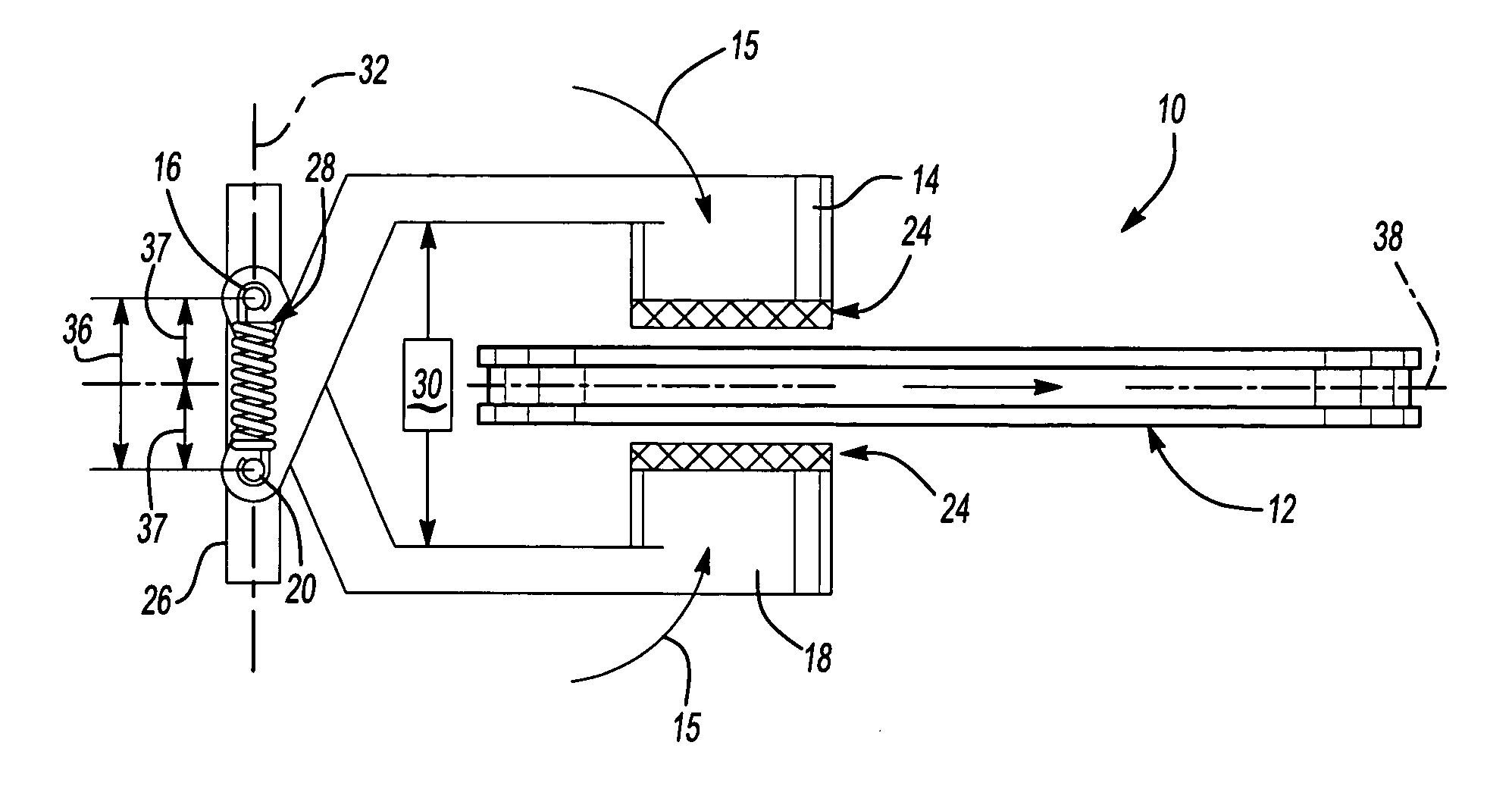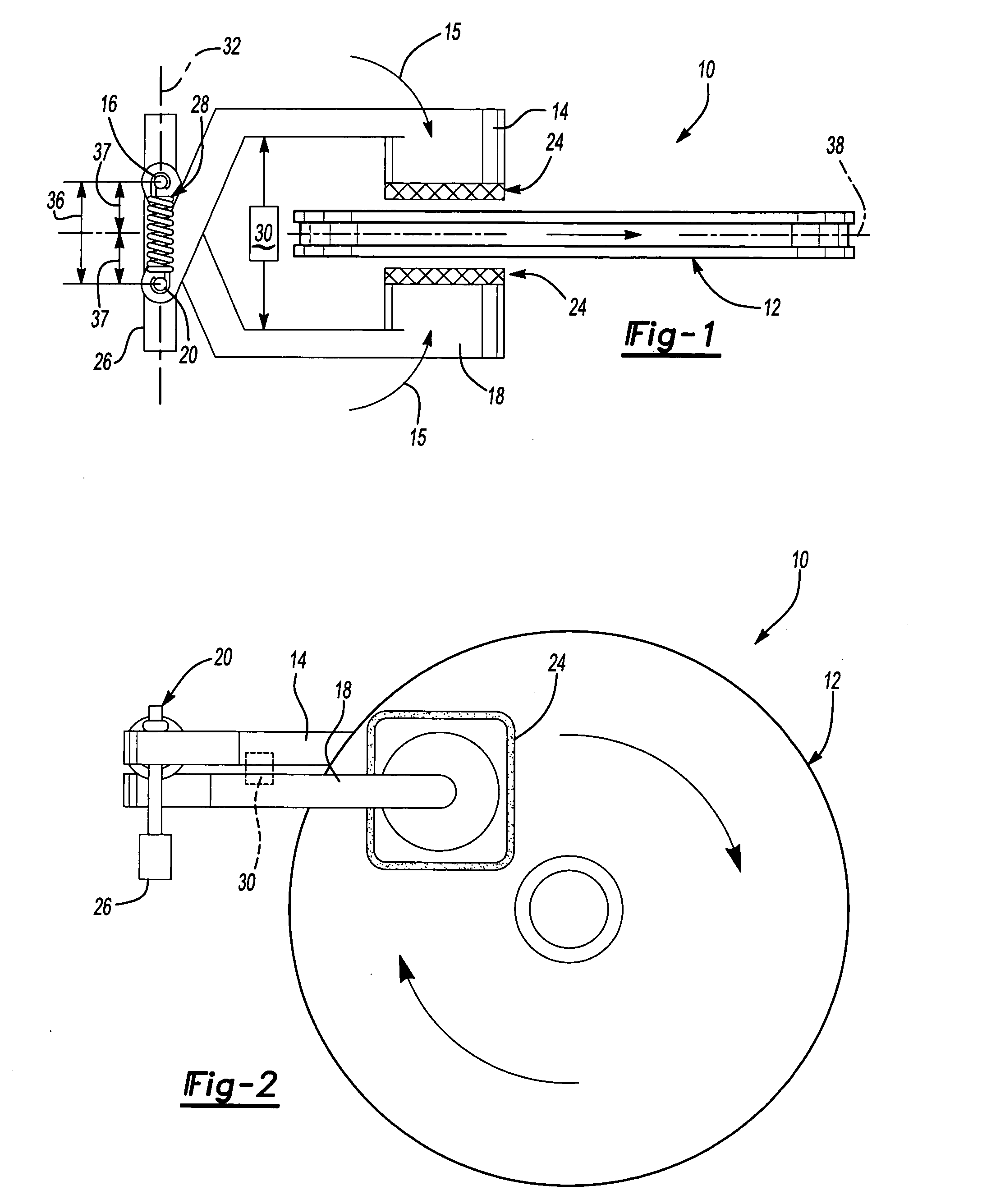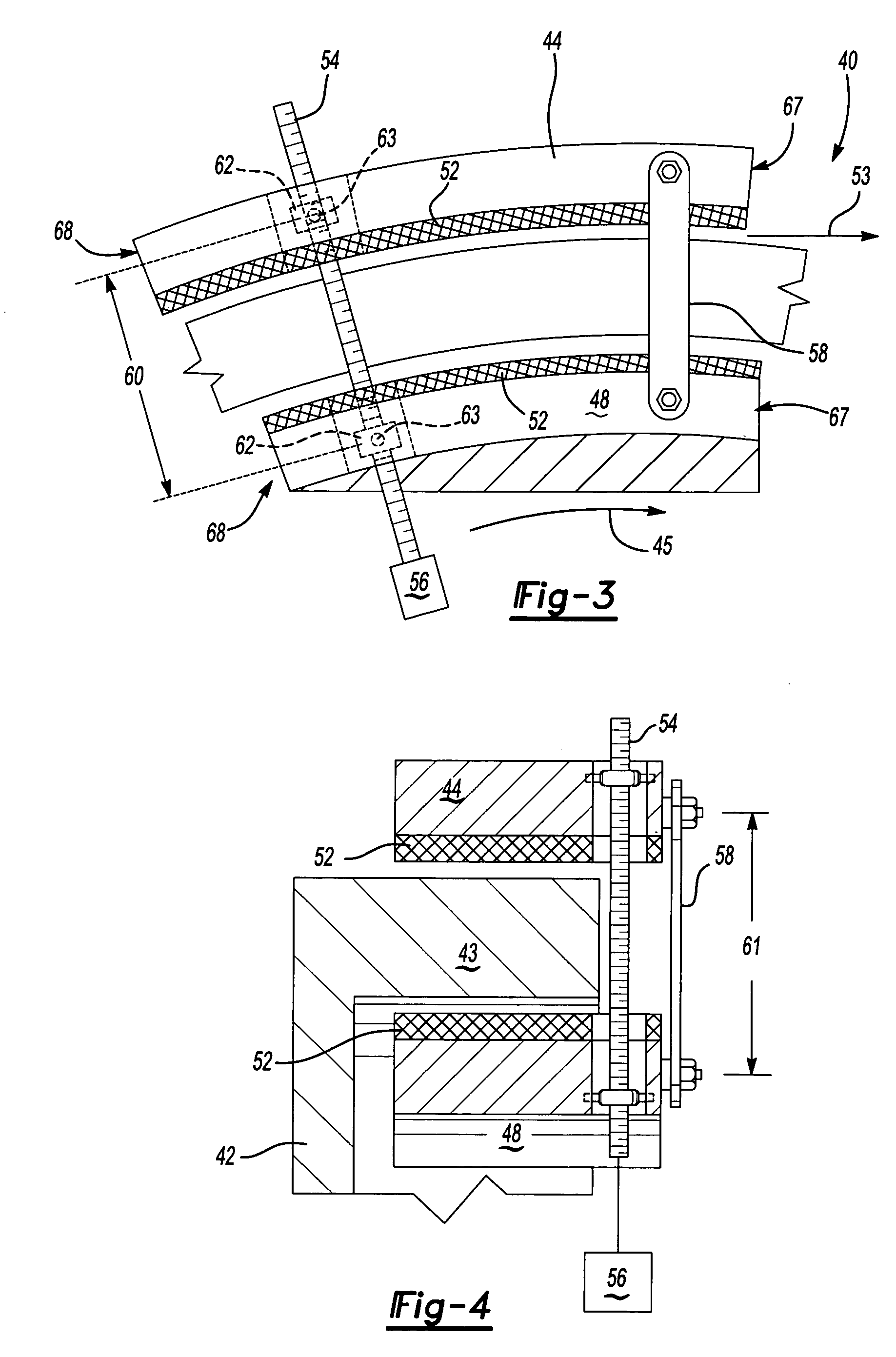Gain stabilizing self-energized brake mechanism
a self-energized, self-energized technology, applied in the direction of mechanical equipment, braking systems, transportation and packaging, etc., can solve the problems of multiplication of braking force, and achieve the effect of increasing braking force, uniform, controllable and predictable increases in braking for
- Summary
- Abstract
- Description
- Claims
- Application Information
AI Technical Summary
Benefits of technology
Problems solved by technology
Method used
Image
Examples
Embodiment Construction
[0026] Referring to FIGS. 1 and 2, a self-energizing brake assembly 10 includes first and second calipers 14, 18 pivotally attached to a support 26. The calipers 14, 18 engage a rotor 12. The contact surface between the calipers 14, 18 and the rotor 12 is formed by friction material 24. Frictional contact between the calipers 14, 18 causes a rotation toward the rotor 12 in a direction indicated by arrows 15 that magnifies braking force applied to the rotor 12.
[0027] A first pivot 20 supports the first caliper 14 and a second pivot 16 supports the second caliper 18. A distance 36 between each of the pivots 16, 20 is adjustable. An actuator 30 is used to adjust the distance 36 between the pivots 16, 20. Friction between the calipers 14, 18 and the rotor 12 pulls the calipers 14,18 in the direction of rotation of the rotor 12. The offset position of the pivots 16, 20 causes each caliper 14,18 to be pulled in the direction of rotation of the rotor 12. The pivots 16, 20 are located on a...
PUM
 Login to View More
Login to View More Abstract
Description
Claims
Application Information
 Login to View More
Login to View More - R&D
- Intellectual Property
- Life Sciences
- Materials
- Tech Scout
- Unparalleled Data Quality
- Higher Quality Content
- 60% Fewer Hallucinations
Browse by: Latest US Patents, China's latest patents, Technical Efficacy Thesaurus, Application Domain, Technology Topic, Popular Technical Reports.
© 2025 PatSnap. All rights reserved.Legal|Privacy policy|Modern Slavery Act Transparency Statement|Sitemap|About US| Contact US: help@patsnap.com



